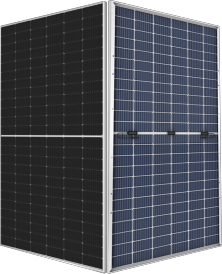N-TOPCon Technology
Maximum power
0
W
Maximum Efficiency
0
%
Process Warranty
0
Years
Power Warranty
0
Years
First Year Degradation
≤
0
%
Linear Degradation
≤
0
%
N-TOPCon Technology
Maximum power
0
W
Maximum Efficiency
0
%
Process Warranty
0
Years
Power Warranty
0
Years
First Year Degradation
≤
0
%
Linear Degradation
≤
0
%
Solutions
Provide better
solar energy solutions.
Residential house roof
Industrial and commercial distribution
Ground power station
Solutions
Provide better
solar energy solutions.
Residential house roof
Industrial and commercial distribution
Ground power station




